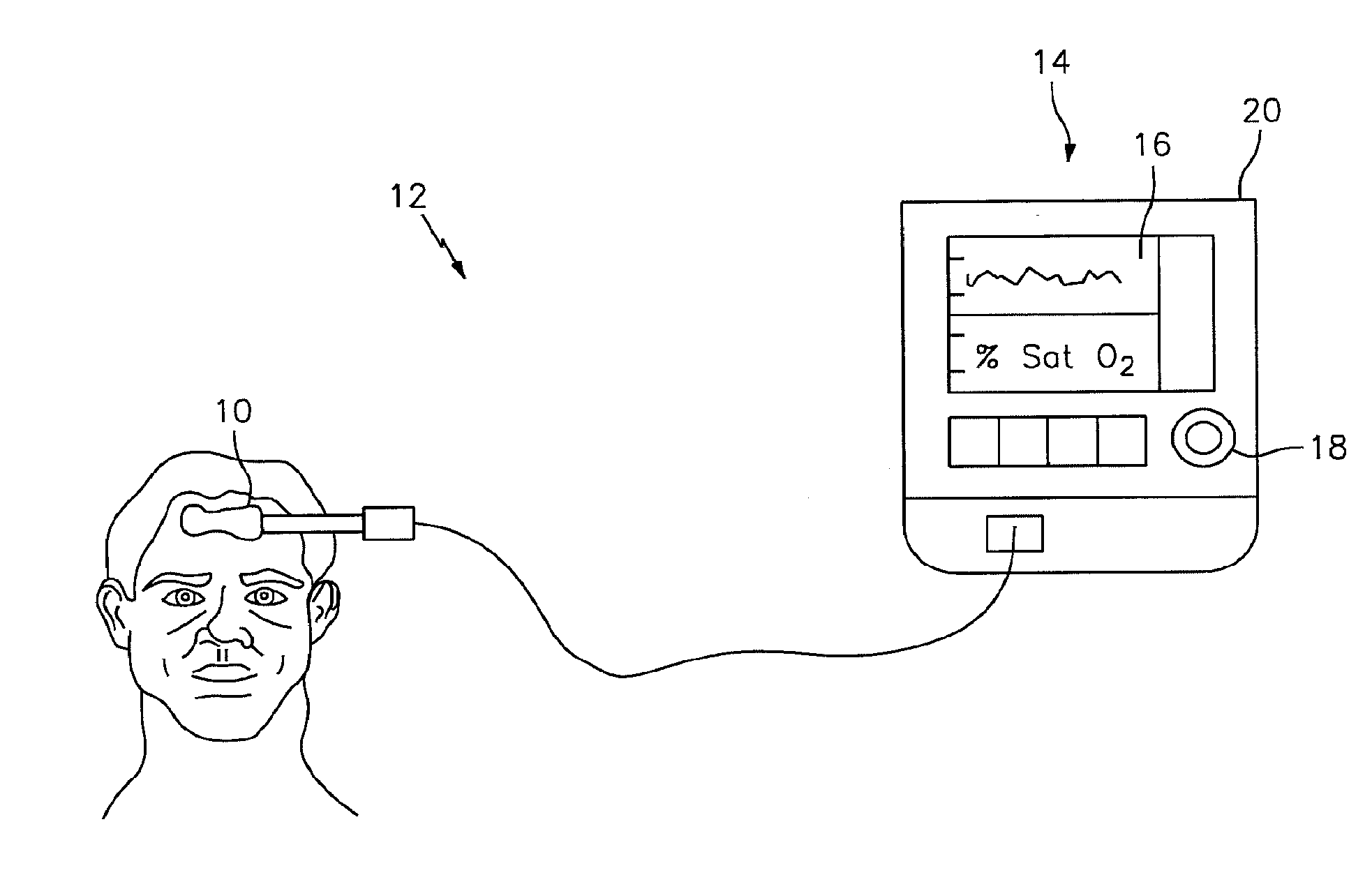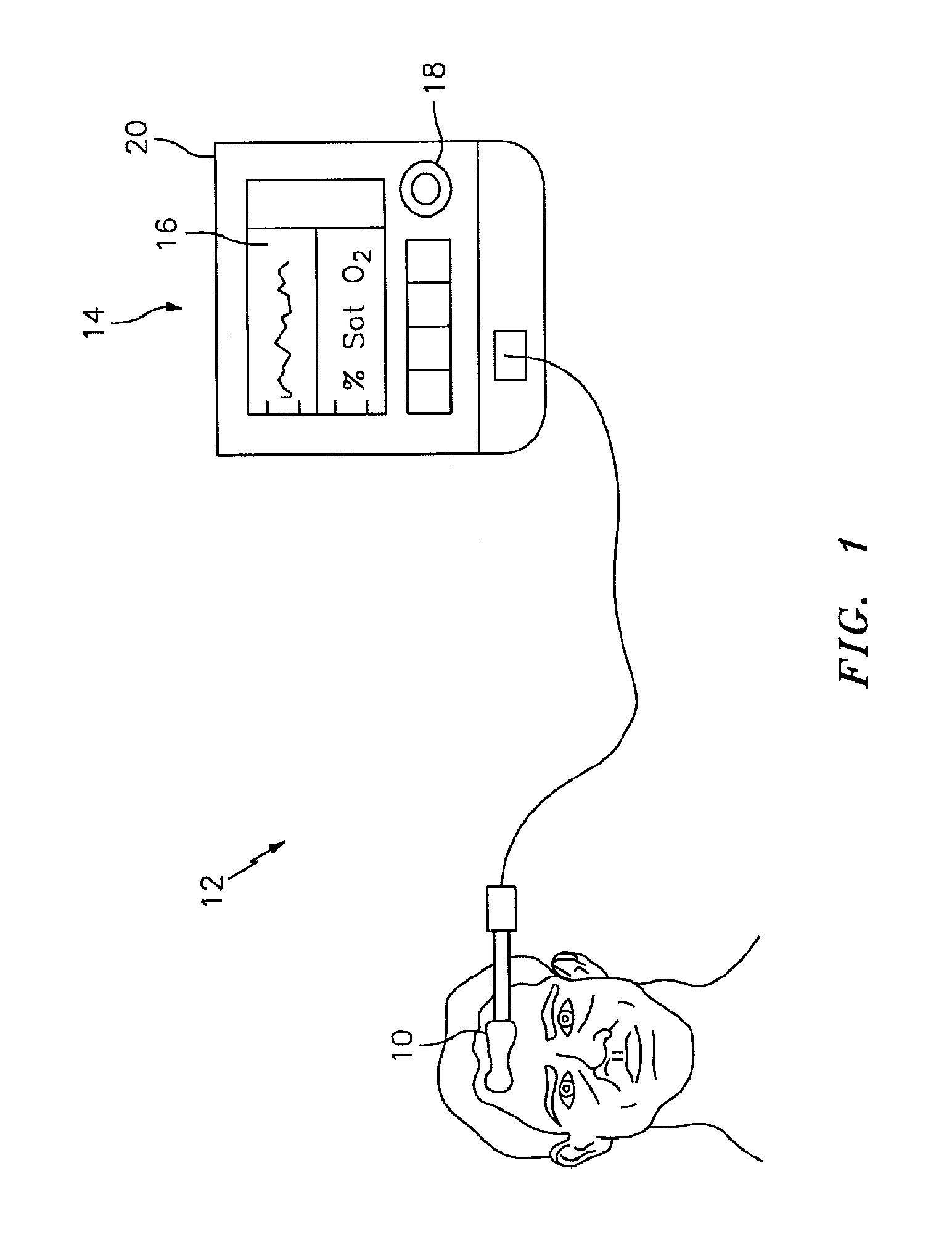Method for spectrophotometrically determining a blood oxygen parameter
a spectrophotometric and blood oxygen technology, applied in the field of non-invasive spectrophotometric medical devices, can solve the problems of discomfort and/or irritation experienced by subjects, and achieve the effect of avoiding the use of non-invasive medical devices
- Summary
- Abstract
- Description
- Claims
- Application Information
AI Technical Summary
Benefits of technology
Problems solved by technology
Method used
Image
Examples
Embodiment Construction
[0020]The present disclosure describes embodiments of a NIRS sensor assembly; however, aspects of the present invention may be applied to other types of non-invasive medical devices, including, for example, pulse oximetry sensor assemblies.
[0021]The NIRS sensor assembly described herein can be used in connection with various types of NIRS systems. In the embodiment illustrated in FIG. 1, the NIRS sensor assembly 10 is used in connection with a NIRS system 12 that includes a base unit 14. The base unit 14 includes a display 16, operator controls 18, and a processor 20 for providing signals to and / or receiving signals from the NIRS sensor assembly 10. The processor 20 includes one or more central processing units (CPUs) adapted (e.g., programmed) to selectively perform the functions necessary to perform the functions described herein. For example, the processor 20 is adapted to operate the NIRS sensor assembly 10 to emit light signals from the light source 22, to receive sensor signal...
PUM
| Property | Measurement | Unit |
|---|---|---|
| wavelength range | aaaaa | aaaaa |
| wavelength range | aaaaa | aaaaa |
| wavelength range | aaaaa | aaaaa |
Abstract
Description
Claims
Application Information
 Login to View More
Login to View More - R&D
- Intellectual Property
- Life Sciences
- Materials
- Tech Scout
- Unparalleled Data Quality
- Higher Quality Content
- 60% Fewer Hallucinations
Browse by: Latest US Patents, China's latest patents, Technical Efficacy Thesaurus, Application Domain, Technology Topic, Popular Technical Reports.
© 2025 PatSnap. All rights reserved.Legal|Privacy policy|Modern Slavery Act Transparency Statement|Sitemap|About US| Contact US: help@patsnap.com



